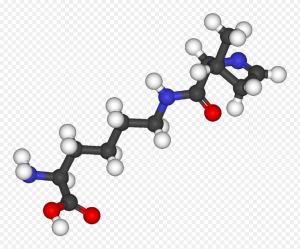
|
Professor Ph.D. 1985. University of Wisconsin-Madison. |
|
|
Interest in methanogenic microbes first revolved around their economic potential and impact on human activities and the environment. A methanogen s existence depends on producing large amounts of methane, an alternative energy source; and they make methane while carrying out the final stages of the breakdown of organic material in important environments like lake sediments, cattle and sheep rumen, and sewage digesters. But as knowledge of methanogens expanded, so have the reasons for studying them. They were the first organisms identified as members of the Archaea, a domain of life evolutionarily separate from Bacteria or Eucarya. Methanogens possess an unusual biochemistry and molecular biology, and have distinctive cofactors and enzymes to form methane. In recent years we have shown that some methanogens have even adapted their genetic code to serve the end of methanogenesis. This has led to our studies of the novel genetically encoded amino acid, pyrrolysine. Methanogenesis from methylamines.Our lab studies Methanosarcina spp. because this genus can convert more compounds to methane than most other methanogenic genera. We asked how such pathways evolved, and demonstrated that making methane from one set of compounds, the methylamines, required recruitment of specialized methylamine methyltransferases that methylate corrinoid cofactor (a vitamin B12 derivative) bound to a partner protein (Burke et al., 1997; Ferguson et al., 1997, 2000; but see also Tallant 2001). As we sequenced the genes encoding one of the methylamine methyltransferases, we found it contained an in-frame amber (TAG=UAG) codon (Burke et al., 1998). Amber is normally a stop codon and so we began a several-year long quest to understand the amber codon connection to methanogenesis. We found single amber codons were in all methylamine methyltransferase genes, that the amber codon remained in the mRNA made from them (Paul et al. 2000), and that UAG was translated (James et al, 2001). We then collaborated with the lab of Michael Chan, who solved the structure of a methylamine methyltransferase and further deduced the structure of the amino acid that corresponds to the UAG codon (Hao et al, 2002). This was the first glimpse of pyrrolysine. The direct genetic encoding of pyrrolysine.Our subsequent studies have shown that pyrrolysine has directly entered the genetic code much like the original twenty amino acids. Pyrrolysine has its own tRNA (called tRNAPYL or tRN CUA ) that can decode UAG (Srinivasan et al., 2002). A gene called pylS follows the tRNAPYL gene in the methanogen genome. The protein made from pylS is a pyrrolysyl-tRNA synthetase. That is, this enzyme attaches chemically synthesized pyrrolysine (Hao et al. 2004) directly to tRNAPYL , a key step that allows pyrrolysine entrance to the genetic code (Blight et al., 2004). This was the first time an aminoacyl-tRNA synthetase was found for any amino acid other than the common twenty amino acids. UAG is both stop and sense codon in Methanosarcina.We have found the methanogen still uses UAG as a stop codon (Longstaff, Blight et al., 2007); and a balance exists between use of UAG as a stop codon and a sense codon within Methanosarcina acetivorans. In genes that don�t normally code for a pyrrolysyl-protein, the balance is tipped in favor of UAG as a stop codon, and only a fraction of the UAG is translated as pyrrolysine. For one of the pyrrolysyl-proteins, the balance is tipped toward mostly UAG translation as pyrrolysine. A downstream enhancer sequence (called PYLIS) is important in this process. In the absence of PYLIS, pyrrolysine insertion into protein is much less efficient. This is important for methanogen survival, as high amounts of methyltransferase are made, and methanogens gain little energy from making methane from methylamines. Biosynthesis of pyrrolysine.Nearby the pyrrolysyl-tRNA synthetase and tRNAPYL genes are three more pyl genes, pylB, pylC,and pylD. The enzymes from these genes are responsible for making pyrrolysine from common cellular metabolites (Longstaff et al., 2007). This is distinct from the ligation of the amino acid to tRNAPYL . The pathway is yet unknown, but several are possible (Krzycki, 2004; Longstaff et al. 2007) and we are now investigating the activities of the individual enzymes. The genetic encoding and biosynthesis of pyrrolysine can be transmitted to other organisms.We have shown that the transfer of the pyl genes to a na .ve bacterium imparts the ability to make pyrrolysine and to translate UAG codons as pyrrolysine (Longstaff, et al. PNAS 2007, but see also Blight et al., 2004). In other words, the genetic encoding of pyrrolysine can be transmitted from organism to organism with only five genes. This has led us to propose that genetically encoded pyrrolysine could be spread from microbe to microbe in the environment. Such a genetic code expansion may have already happened in nature as illustrated by a gram positive Bacteria called Desulfitobacterium hafniense, which possesses all five of the pyl genes much like would be found in the methanogen (Srinivasan et al., 2002). Function of pyrrolysine in methanogenesis.Why was pyrrolysine recruited to the genetic code of methanogens? To answer this question we deleted the tRNAPYL gene and found the only detectable defect in the mutant was an inability to make methane from methylamines (Mahapatra et al, 2006). We have further found methylamine methyltransferases lacking pyrrolysine are not functional, and are investigating the underlying enzymology. This has brought our studies back to our original question of how Methanosarcina spp. evolved the ability to make methane from methylamines. Our earlier studies showed the evolution of methanogenesis from methylamines required the ability to make methylamine methyltransferases, our latest studies showed that the ability to make those methyltransferases quite literally meant they had to remodel their genetic code to include a novel amino acid. |
|


 Joseph A Krzycki
Joseph A Krzycki